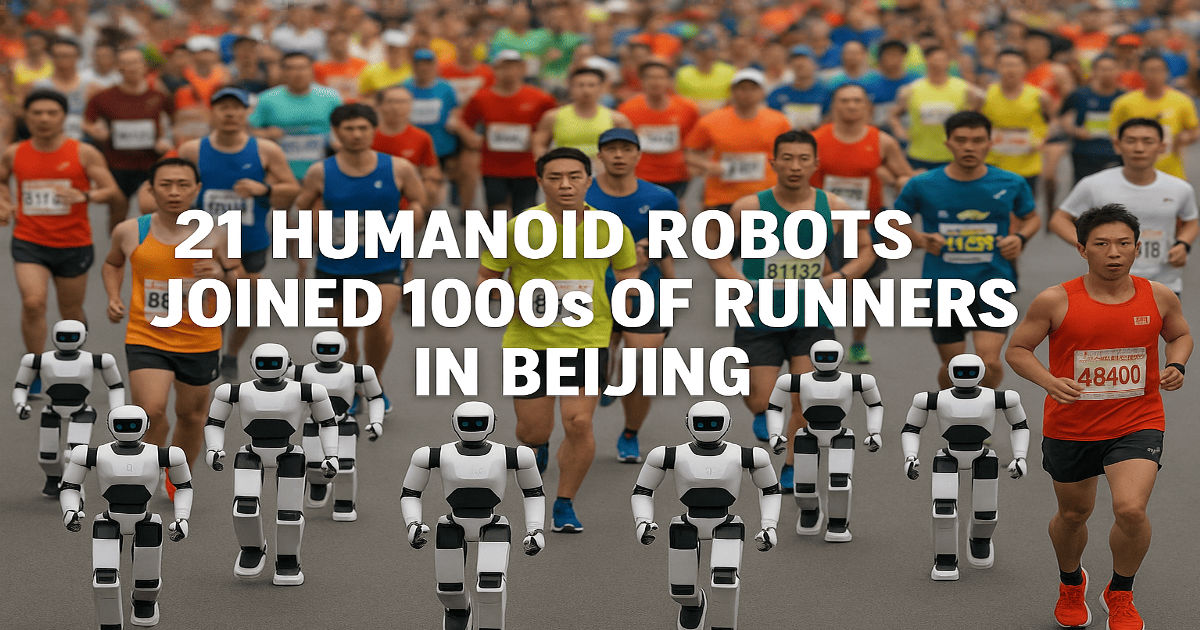
Humanoid Half-Marathon Beijing saw humans outrun robots in a historic race, blending athleticism with advanced humanoid technology.
Humanoid Half-Marathon Beijing made global headlines as it hosted the world’s first race where humans competed against humanoid robots. The Humanoid Half-Marathon Beijing event was not just a test of speed, but also a showcase of robotics, endurance, and innovation. Participants, both human and robotic, raced through a specially designed track in Beijing, drawing attention from tech enthusiasts and fitness fans alike.
This unique event highlighted the growing integration of AI and robotics in sports and challenged the limits of human and machine capabilities. The Humanoid Half-Marathon Beijing is expected to pave the way for future tech-driven sporting events, inspiring innovation around the world. You can read more about our Technology News for updates on emerging tech trends.
covered by global media, including The Guardian’s report on the event which highlighted the significance of human-machine interaction in future sports.
In a remarkable blend of human stamina and robotic innovation, Beijing hosted the world’s first half-marathon featuring humanoid robots. The 21-kilometer race, held in the city’s Yizhuang district on Saturday, saw thousands of runners compete alongside 21 robot participants in a historic man-versus-machine challenge.
Despite their futuristic appeal, the robots were no match for their human counterparts. While some managed to complete the course, others struggled right from the start. One robot collapsed moments after the race began, lying motionless for several minutes before rebooting. Another crashed into a barrier just a few steps in, dragging down its handler in the process.
Leading the robot pack was Tiangong Ultra, developed by the Beijing Innovation Centre of Human Robotics, which finished the race in 2 hours and 40 minutes—more than an hour behind the men’s human champion.
Though the robots drew plenty of attention, experts say the event was more about spectacle than performance. “These are fun demonstrations,” noted Alan Fern, a robotics professor at Oregon State University. “But they don’t showcase real intelligence or practical usefulness.”
Still, the sight of humanoid robots running was awe-inspiring for many spectators. “It feels like I’m watching the future unfold,” said He Sishu, a local AI engineer.
However, these robot runners weren’t fully autonomous. Each bot had a dedicated support team, and some required manual assistance to stay upright throughout the race. Companies like DroidVP and Noetix Robotics introduced a variety of robot models—some wearing boxing gloves and sporty headbands—bringing both entertainment and innovation to the event.
Officials compared the setup more to motorsports than traditional athletics, emphasizing the team-based approach behind each robot’s performance.
Looking ahead, developers are focusing on more practical uses. “Our next step is applying this technology to real-world environments—factories, businesses, and homes,” said Tang Jian, CTO of Tiangong’s robotics lab.
While the robots may have trailed in the race, the event marked a significant stride in showcasing how robotics and AI are evolving—not just for competition, but for integration into everyday life.
Also Read : PM Modi & Musk Discuss Tesla India Launch 2025 and Tech Ties
📲 Follow us:
Instagram – @newsaffair360
Facebook – @newsaffair360
YouTube – @newsaffair360







